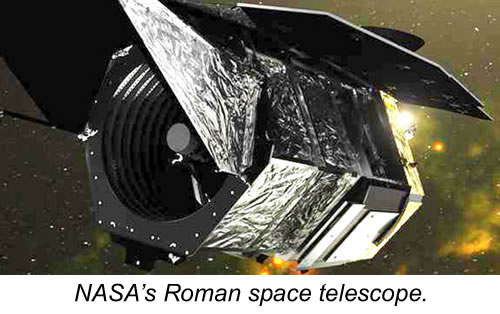|

NASA Roman Space Telescope
Vibration Isolation Optimizes
Image Clarity
By Steve Varma

By Steve Varma: The Nancy Grace Roman Space Telescope
(Roman), formerly named the Wide Field Infrared Survey Telescope (WFIRST), is a
NASA space observatory currently in development and is scheduled to launch into
space no later than May 2027.
The Roman Space Telescope hosts two
instruments: the Wide Field Instrument (WFI) which emphasizes studying the
evolution of the universe and understanding what solar systems beyond our own
are like; and the Coronagraph Instrument to advance technologies for extreme
high contrast imaging and spectroscopy from space.
In 1998, scientists
discovered that the expansion of the universe is accelerating, causing them to
reconsider their models for the formation of the universe. Visible matter
accounts for only about five percent of the contents of the
universe.
Nearly 27 percent of the universe comes in the form of dark
matter, which doesnt emit or absorb light. NASAs Roman space telescope. Dark
matter is only detectable through its gravitational effects on visible
matter.
A significant portion of the Romans mission will be dedicated to
monitoring hundreds of thousands of distant galaxies for supernova explosions,
which can be used to study dark energy and the expansion of the
universe.
Romans primary instrument is the Wide Field Instrument (WFI)
which will have a field of view that is 100 times greater than Hubbles widest
exposure. It will capture more of the sky with less observing time. Over the
first five years of observations, Roman will image over 50 times as much sky as
Hubble has covered so far in 30 years. The WFI will measure light from a
billion galaxies over the course of the mission lifetime.
Full
article...
|
